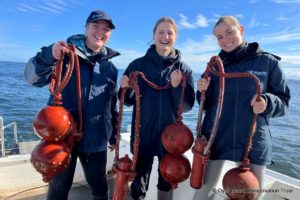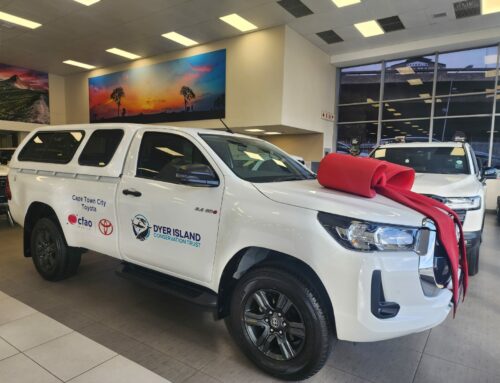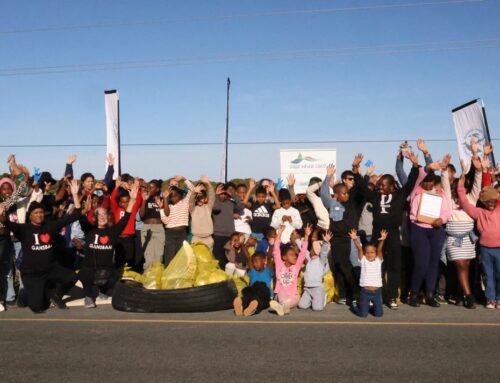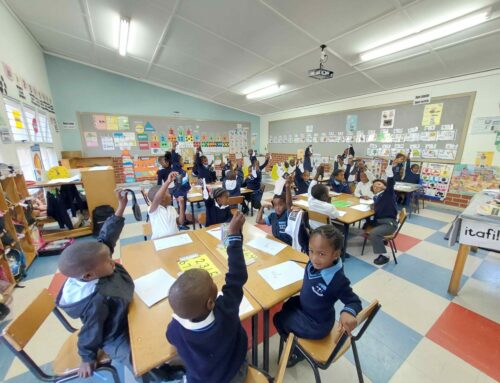On Sunday, 21 July, marine biologist Amy Webber, volunteer manager Etienne Roets, skipper Hennie Odendaal and 2 of the Marine Dynamics Academy scientific interns left Kleinbaai Harbour aboard research vessel Lwazi.
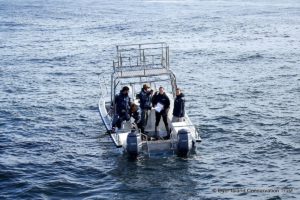
In collaboration with the Acoustic Tracking Array Platform (ATAP), the team from the Dyer Island Conservation Trust and Marine Dynamics Academy went out with the goal of retrieving previous receivers and deploying the replacements. The receivers record valuable data on marine animals that have been tagged with acoustic transmitters present in the area. The continuous recording of this information offers insight into the residence time of the animals within the wider Dyer Island ecosystem and where they travel to afterwards.
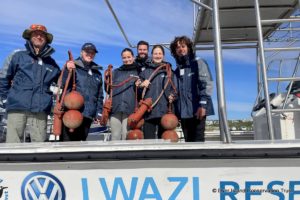
The previous deployments were logged using GPS, making locating them easier. Utilising a hydrophone, the previous receivers were successfully recovered before the new ones were deployed in the same area. The team were even lucky to share the water with a curious pair of shy albatross, a species of pelagic bird with an impressive wingspan reaching over 2 metres.
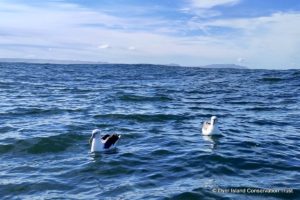
The acoustic receivers form part of a large network across the South African coast, with over 250 receivers moored over a range of 2200km, as arranged by ATAP. The collaboration of scientists across South Africa equips the associated conservation initiatives with knowledge of marine animals not only within our locality but through the entire coastline, from False Bay in the Western Cape to Ponta do Ouro at the South African and Mozambique border. Long term and large scale understanding provides a firm baseline on which effective conservation can be established, protecting the area and marine life within it.
